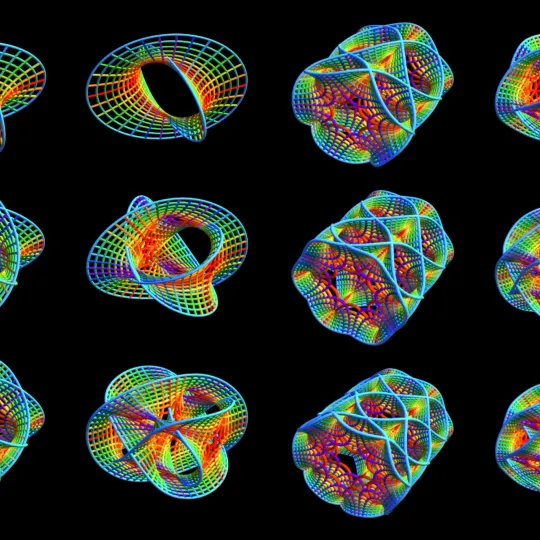
The Reality in The Big Bang Theory's "String Theory"
By Ethan Eng
The Big Bang Theory is an American sitcom surrounding the lives of Leonard Hofstadter and Sheldon Cooper, who are physicists working at the California Institute of Technology. The show primarily focuses on their comedic struggles as they navigate their social and romantic lives.
In the series, Sheldon Cooper is a theoretical physicist specializing in string theory. His theory, which is considered a contender for being the “theory of everything,” suggests that the fundamental building blocks of the universe are not point-like particles, but rather small, vibrating strings of energy. The different types of particles these strings represent are determined by the way they vibrate.
String theory also suggests the existence of higher dimensions of space and time, beyond the familiar three spatial dimensions and one time dimension we experience. It aims to unify the four fundamental forces of nature—gravity, electromagnetism, and nuclear forces— into a single framework. In doing so, string theory has the potential to become the “theory of everything.”
In the show, both Sheldon and Leonard are supporters of string theory and much of their work revolves around it. Their expertise in string theory provides a scientific backdrop for the show and facilitates character development, often leading to comedic scenes where Sheldon overcomplicates his explanations of it.
The universe, as we know it, is constantly expanding, which is a phenomenon rooted in the Big Bang Theory. It suggests that the universe began with a massive explosion and has been the beginning of this infinite expansion of space.
However, string theory suggests that the Big Bang may not be the ultimate origin of everything. One interpretation of string theory proposes that if time were played backwards, everything would converge into a maximum density point, in other words the Big Bang, and then shrink again. This indicates that the Big Bang could be part of a larger framework rather than a singular beginning.
Despite its potential, string theory faces a significant challenge: the lack of experimental data. This issue is mirrored in Season 11 where Sheldon faces a creative slump and shifts his focus onto dark matter for a new direction in his scientific research, depicting the real-world struggles that physicists face with theoretical research and string theory.
Heather Ryan, a member of Massachusetts Institute of Technology’s 2014 class and prospect physics major, writes that “The Big Bang Theory may not be entirely realistic, but at least it brings discussions of science to primetime, and exposes the public to topics that they might otherwise never hear about.”
The Big Bang Theory integrates these theories into its storyline, using them to create a fleshed-out, intellectual background that sets the stage for the characters’ comedic interactions. Playing on the stereotypes of “nerdy” physicists, the show highlights the social awkwardness of Sheldon and Leonard as they navigate through personal relationships, drama, and scientific debates.



